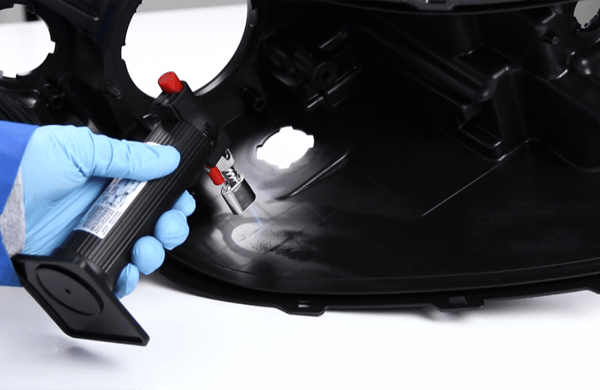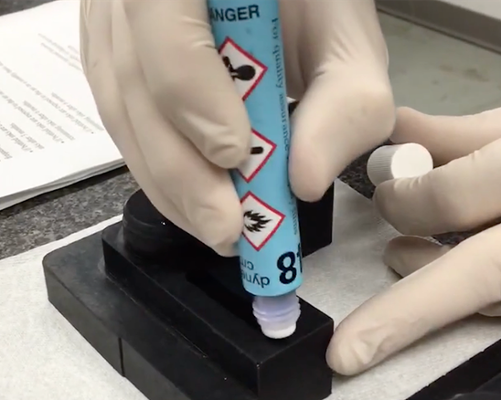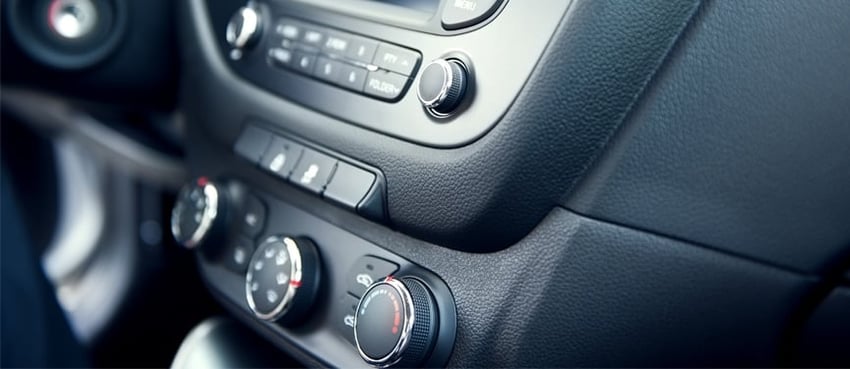Key Takeaways
- Flame treatment modifies polymer surface chemistry to improve coating and paint adhesion, but overtreatment can destroy the surface.
- Traditional testing methods like dyne inks can’t accurately or safely measure low-energy polymers.
- Water contact angle (WCA) measurement with Surface Analyst technology provide fast, quantitative, and non-destructive verification of surface cleanliness.
- Integrating WCA data into BConnect enables continuous process control, waste reduction, and validated adhesion performance.
The Challenge: Paint Adhesion Failures from Improper Flame Treatment
A leading manufacturer of automotive exteriors and interiors struggled with paint consistently failing to adhere to dashboard components. The issue traced back to inappropriate flame treatment, a process intended to modify polymer surfaces for bonding but easily disrupted by overtreatment.

Instead of using flame treatment for surface preparation, the manufacturer had been applying it to remove excess flashing along dashboard edges. This secondary heating caused over-flaming, damaging the polymer surface and drastically reducing its ability to bond with paint.
The company needed a precise, data-driven way to determine the ideal treatment intensity—what Brighton Science calls the “sweet spot” of surface activation.
The Limits of Dyne Inks
At the time, the team relied on dyne inks to assess surface cleanliness. However, these inks have several critical drawbacks:
- They’re destructive, leaving residue and altering the surface.
- They offer subjective, operator-dependent results.
- They have limited range, particularly for low-energy polymers common in automotive interiors.

Because of these constraints, the manufacturer’s parts were being damaged during testing—further contributing to waste and inconsistent data.
The Solution: Quantitative Surface Measurement
Brighton Science worked with the manufacturer to develop a quantitative verification process using water contact angle (WCA) measurement. By capturing objective surface cleanliness data before and after flame treatment, engineers could see precisely how each variable (distance, flame intensity, and dwell time) affected adhesion outcomes.
A series of trials were performed:
- Surfaces were measured before and after flame exposure.
- Paint was applied and evaluated through peel tests.
- Flame parameters were adjusted (closer/further, faster/slower) based on surface data and adhesion performance.
This approach enabled the team to correlate specific WCA values with successful paint adhesion, establishing a validated process window for flame treatment.
Results: Measurable Improvement and Major Cost Savings
With Brighton Science's patented Surface Analyst technology in place, the manufacturer achieved:
- Accurate, non-destructive surface testing
- Elimination of dyne inks and subjective visual evaluation
- Reduced waste, saving approximately $230,000 annually
- Quantitative process data that can be logged, shared, and monitored
By replacing dyne inks with the Surface Analyst, the manufacturer gained control over a critical step in paint adhesion, ensuring every dashboard met both functional and aesthetic quality standards.
Building Continuous Process Intelligence with BConnect
Today, manufacturers can take surface measurement a step further by integrating WCA data into BConnect, Brighton Science’s platform for Surface Intelligence. This connection transforms point-in-time testing into a continuous process control system, enabling teams to monitor, compare, and optimize flame treatment results across facilities and suppliers.
BConnect delivers:
- Automated traceability of surface conditions
- Predictive insight into adhesion readiness
- Process optimization to prevent costly rework and failures
Struggling with adhesion failures? Been there. Solved that.
Q&A: Common Questions About Flame Treatment
Q: How does over-flaming affect adhesion?
A: Over-flaming causes local melting and polymer reorientation, which lowers surface energy and prevents coatings or paints from bonding properly.
Q: Why not use dyne inks to verify treatment?
A: Dyne inks are unreliable for low-energy polymers, can damage the surface, and don’t provide quantitative data for process control.
Q: What’s the advantage of using water contact angle measurement?
A: WCA provides an objective, numeric indicator of surface cleanliness and readiness—allowing engineers to optimize flame treatment precisely.

